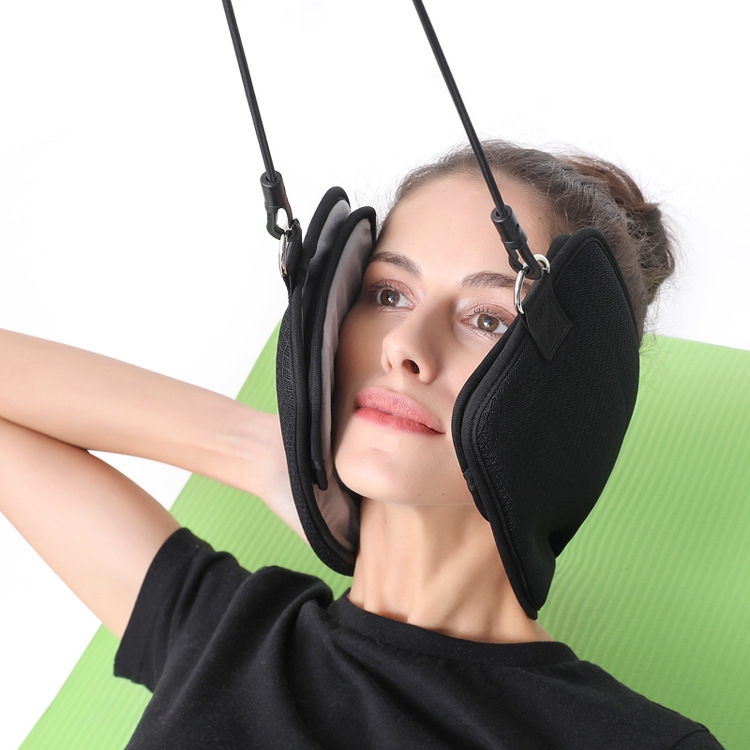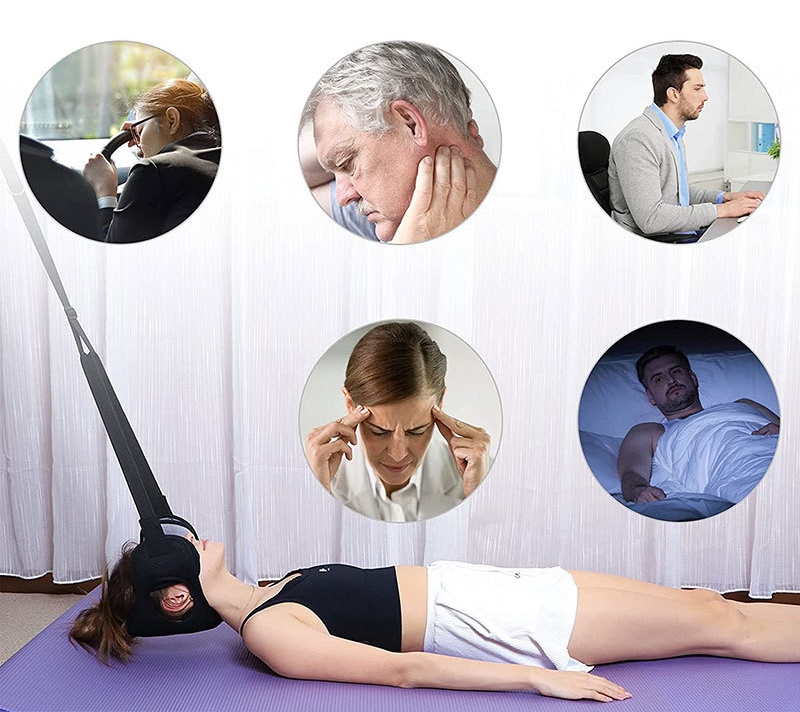The Neck Hammock is a surprisingly simple but highly effective device for alleviating neck pain. This gently stretching hammock utilizes your own body weight to traction your neck and decompress the spine.
With regular use, the hammock can significantly reduce neck pain, headaches, and stiffness caused by compressed nerves, muscle tightness, and poor posture. But getting optimal, lasting relief requires using proper technique.
Follow this step-by-step guide to ensure you use your Neck Hammock safely and effectively.

Choosing the Right Location
The first step is choosing an appropriate location to install your Neck Hammock. You’ll need:
A Support Beam
- An open doorway with a beam across the top is ideal. Measure the height to ensure your hammock will hang properly.
- An exposed pipe, rafter, or sturdy tree branch can also work if at the right height.
- If no beam is available, consider installing a chin-up bar or standing to hang the hammock from.
Enough Clear Space
- Make sure you have at least 3 feet of clear space in front of the beam to lie down.
- There should be nothing behind where your head hangs to avoid bumping into objects.
- If needed, move furniture or clear clutter to create an open area.
Comfortable Surface
- Set up over a carpeted or padded floor for comfort lying down. An exercise mat, blanket or pillow can also cushion.
- Avoid bare floors. The traction may cause your feet to slide. Yoga socks provide grip if needed.
- If setting up outside, check the ground is level and free of rocks and debris.
Adjusting the Hammock Height
Proper hammock height is key to keeping your neck aligned for maximum benefit.
Eyeball the Height
- A general guideline is to hang the hammock so your eyes land about level with the bottom when lying down.
- There should be just enough space to tilt your head back into the hammock without strain.
Use the Extensions
- Most Neck Hammocks include adjustable straps to extend over higher beams if the basic ropes are too short. Use these extensions if needed to reach the ideal height.
- For very high ceilings, you may need to purchase separate extension kits to get the right hanging length.
Test and Adjust
- Lie back with your neck and spine centered in the hammock. If your head tilts down or up, readjust the height accordingly.
- Getting height right prevents neck strain and allows you to relax fully.
Setting Foot Straps
The adjustable foot straps control the intensity of the stretch. Proper tension provides traction without over-pulling.
Start with Light Tension
- Beginners should set very light tension by leaving plenty of slack in the straps. As you acclimate, gradually take up the slack.
- If you have severe pain, set the minimum tension to provide gentle traction without aggravation.
Control the Stretch
- Adjustable buckles, clips or velcro straps let you easily control traction intensity. Applying more tension increases the stretch.
- Increase intensity very gradually over 4-6 weeks as muscles lengthen and vertebrae decompress.
- Reduce tension if you feel any sharp pain or tingling. Stop immediately if symptoms persist.
- Tuning the traction level allows you to target the stretch and progress safely.

Getting Into the Hammock
Carefully getting into position protects your neck and gets you aligned properly.
Sit First
- Sit in front of the hammock with your back to the beam. Slide yourself close so the back of your shoulders touches the base.
Check Foot Position
- Extend your legs straight out and check your feet reach the end of the hammock comfortably. Adjust if needed.
Recline Back Slowly
- Keep your neck straight and slowly recline back, lowering your upper body into the hammock. Avoid any quick, jerking motions.
- The fabric should curve comfortably under your neck as you settle in.
Check Alignment
- Be sure your spine stays straight with your neck and head aligned with your torso. Your eyes should face forward, not tilted up or down.
- Getting aligned as you recline avoids putting any sudden strain on your neck.
Relaxing in the Hammock
Once settled into the hammock, fully relax to allow your muscles to release and your spine to decompress.
Release Muscle Tension
- Consciously relax any clenched muscles. Allow your body to feel heavy.
- Breathe deeply and exhale fully. Scan for areas of residual tension to melt away.
Clear Your Mind
- Let go of active thoughts. Imagine floating on a cloud or gently rocking in a swaying hammock.
- Play calming music if it helps quiet your mind and achieve a meditative state.
Allow Time to Decompress
- Remain still for 10 to 20 minutes allowing your vertebrae to gradually decompress and muscles fully elongate.
Adjust Straps if Needed
- If you feel tension in your neck or feet, carefully reach down and loosen the straps slightly to reduce the pull.
- Total muscle relaxation and mental calm will enhance the traction and stretching effects.
Exiting the Hammock
Use care when exiting the hammock to avoid any sudden neck motions.
Bend Knees
- Keeping your neck still, bend your knees and place your feet flat on the floor.
Remove Feet from Straps
- Lift one foot out of the straps, then the other. Keep knees bent.
Roll Off Slowly
- Again keeping your neck aligned, slowly roll your body off the hammock base until you can place your hands flat on the floor.
- Push yourself up to sitting using your hands and arms, not your neck.
Take Your Time
- Move thoughtfully and gradually. No quick motions. This protects your neck as you transition back upright.
- Carefully removing your feet and lifting yourself off avoids reinjuring your neck after decompression.
Integrating Neck Exercises
Gentle exercises complement the hammock by strengthening neck muscles and restoring range of motion.
Simple Stretches
- Try basic stretches first, like gently tilting your ear to each shoulder and turning your chin to look over each shoulder.
Isometrics
- Isometric exercises like pressing your palm gently against your forehead strengthen muscles without motion.
Resistance Bands
- As strength increases, use resistance bands in all directions to safely load the small muscles.
Yoga Poses
- Gentle yoga for the neck like cat-cow stretch, neck rolls, and side bends increase mobility.
- Start very gently. Stop any exercise that causes pain.
Setting a Routine
Consistency is key to getting lasting relief. Stick to a regular routine for best results.
Daily First
- Use the hammock daily for the first 4-6 weeks to realign your neck anatomy and establish increased mobility.
10-20 Minutes Per Session
- Limit sessions to 10-20 minutes. Any longer provides no additional benefit. Start with 10 minutes if very tight.
Morning and Evening
- Using the hammock consistently in the morning and evening bookends your day with realignment and relaxation.
Before and After Activity
- Use before any activity that strains your neck to pre-stretch the muscles. Use after activity to help muscles recover.
- Prioritize daily use in your schedule to stack positive effects over time.
Avoiding Pitfalls
By being aware of common mistakes, you can optimize your hammock use:
- Don’t increase traction too quickly – Gradually increment tension over weeks to allow joints and nerves to acclimate.
- Don’t overstretch – Find the maximum comfortable stretch. Going past that provides no added benefit.
- Don’t strain getting in/out – Transition carefully to avoid abrupt motions.
- Don’t shrug or tense shoulders – Keep shoulders relaxed on the base, not hunched up.
- Don’t use it with numbness/tingling – Reduce or stop traction if nerves are irritated.
- Following proper techniques will keep you progressing safely.

Gauge Your Progress
Track your progress to make sure you are getting the intended benefits:
- Notice reduced intensity and frequency of pain and headaches.
- Check if the range of motion is improving by carefully rotating the neck before and after sessions.
- Feel for muscles relaxing and loosening up as you remain in the hammock.
- Monitor if posture is realigning by observing your seated stance.
- Pay attention to overall decreased tension and improved neck comfort throughout your day.
- Adjust your routine if progress stalls and consult a physician if severe symptoms persist.
Be Patient But Persistent
It takes diligence and daily commitment to achieve lasting relief. But sticking with the protocol can free you from neck pain for good.
Stay focused on proper technique, make hammock sessions a priority, and don’t overdo it. Trust the process and results will come.
You’ll be amazed how traction realigns your neck and provides a cumulative loosening. By decompressing those compressed nerves and stretching tight muscles, you can get your neck feeling supple and pain-free again!
So be patient, be persistent, and let your Neck Hammock gently iron out the kinks. Your relaxed, happy neck awaits!













